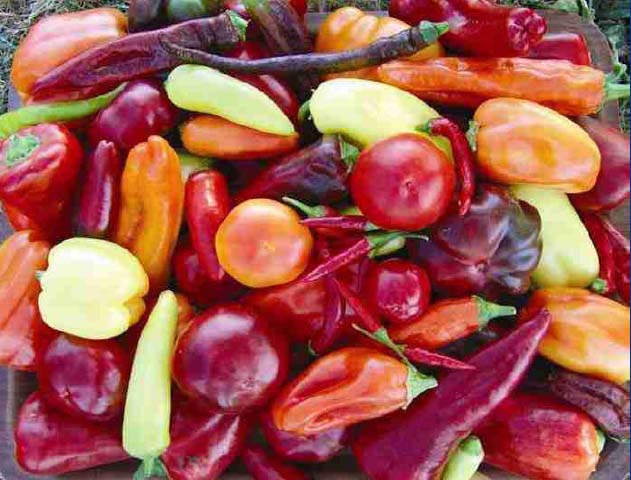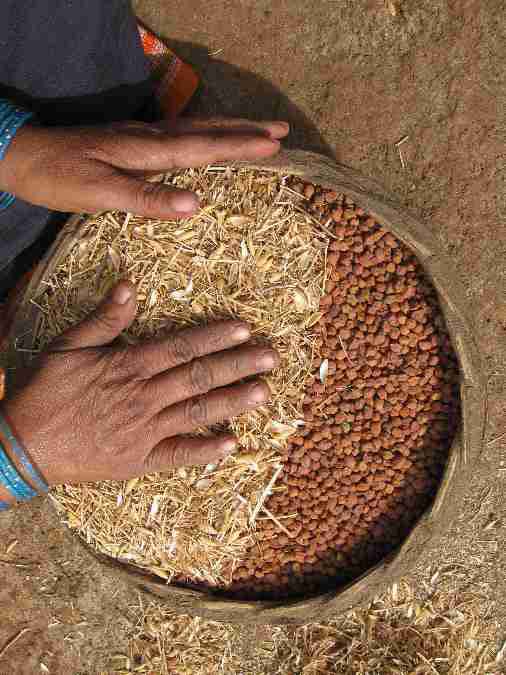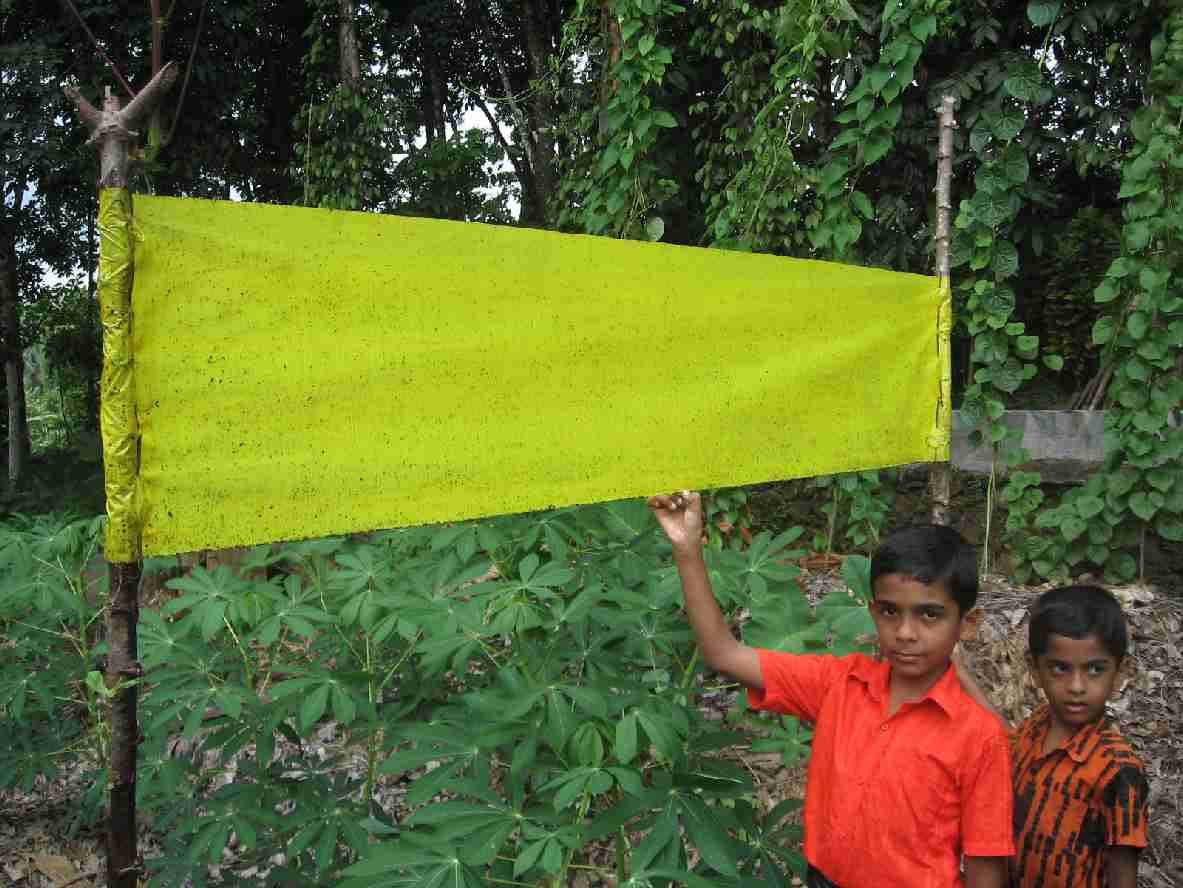 This set of presentations from the conference on Outstanding Organic Agriculture Techniques held during September 2009 at Bangalore deals with the conservation of seeds particularly for small subsistence farmers who are not very well linked with local markets and for whom seed production is still an integral part of farming activity seamlessly merged with the growing of crops and the totality of work and life on a farm.
This set of presentations from the conference on Outstanding Organic Agriculture Techniques held during September 2009 at Bangalore deals with the conservation of seeds particularly for small subsistence farmers who are not very well linked with local markets and for whom seed production is still an integral part of farming activity seamlessly merged with the growing of crops and the totality of work and life on a farm.
The presentations are as follows -
Sowing seeds of consciousness
This presentation by Sangita, Annadana Soil and Seed Savers Network, deals with the conservation of seeds. It attempts to sow the seeds of consciousness, its slogan being "Save a Seed! Save the World!". While making a case for organic agriculture as productive and sustainable, it deals with aspects related to open pollinated seeds, self pollinating varieties, cross pollinating varieties, need for maintaining varietal purity etc. It deals with issues related to extraction of seeds (both wet and dry). The traditional ways of storing seeds like bamboo bins, earthen bins, store houses, mud houses, straw bins and earthen pot-piles are discussed.
Collection and storage of seeds
This presentation by Alka Najan of Institute for Integrated Rural Development, Aurangabad deals with collection and storage of seeds. She stresses on three major aspects – (a) importance of seed storage (b) storage of traditional seeds and (c) seed storage management. In particular, she focuses on seed storage and preservation for crops like wheat, sorghum, maize, pearl millet, pigeon pea and green gram.
As regards, a system of seed production the thrust is on identification of ten healthy plants in each row, healthy plants being defined on the criteria that they have not been infected by diseases, not attacked by insects, have greater resistance, timely bud & flower stages and greater yield. The techniques of seed storage covered include - (a) keeping seeds away from pests and infected plant materials (b) drying under the sun to remove moisture from the seeds and (c) usage of neem leaves, wood ash, red soil, clove, ghee, garlic, cowdung and cow urine for seed treatment.
Our methods of seed saving
This presentation by Laxmiamma of Humnapur village deals with seed saving and
illustrates some methods that can be used to maintain varietal purity of crops. These methods like use of ash and neem leaves for seeds of pigeonpea, sorghum, field beans and cowpea, using foxtail millet as a protectant, saving dryland paddy seeds with vailaakku (leaves of Vitex negundo), saving sesame seeds with paddy husk, saving chickpea with husk etc., can be adapted by farmers to produce and store pure seeds at a minimum cost. The methods are a little time consuming and need meticulous work, but are worthwhile, as they empower small growers, to convert their farms and homes into valuable seed wealth centres.
Organic seed production, rat and insect control techniques
This presentation by George Antony, OFAI Kerala deals with conventional approaches that are comparatively easy and can be employed in organic seed production, such as lady's finger that can be dried under sunshade and kept in a cherru and of rat and insect control techniques such as traps. An example is of yellow trap, which catches the white fly that is known to adversely affect vegetables and tapioca.
approaches that are comparatively easy and can be employed in organic seed production, such as lady's finger that can be dried under sunshade and kept in a cherru and of rat and insect control techniques such as traps. An example is of yellow trap, which catches the white fly that is known to adversely affect vegetables and tapioca.
Seed production for small farmers and home gardeners
This paper by Deepika Kundaji, Auroville observes that if the integrity of farming is to be restored and preserved, it is crucial for farmers to regain and retain self-reliance in all inputs, especially seeds. In areas where seed saving still survives as an integral part of traditional farming, it only needs to be honoured and safeguarded. In other areas where farmers have lost their connection with seeds, they need to win back their privileged role as seed breeders and custodians.
The first half of this paper presents ‘perspectives’ while the second half introduces simple ‘techniques’ for seed production which are practical in the present-day context of farming. The paper discusses the basics of seed saving, focusing on some vegetable crops and shows how the farmer can produce seeds good for sowing his/her next crop.
This paper will be useful to farmers who have been alienated from the process of producing seeds and are eager to rediscover it. It will also serve as a guide to aspirant farmers who are rejecting the urban-industrial way of life and are turning to agriculture, so that right at the outset, seeds can be placed where they belong - at the heart of farming. It is a guide for anyone interested in starting seed conservation or production, beginning on a small scale with vegetables for a home garden.
Small scale production of home garden seeds
This presentation by Deepika Kundaji, with her own experiences as small independent producers, working on a severely eroded wasteland in Auroville and driving the rise of organic farming. Seeds (about 80 to 90 varieties) are multiplied and at least 3000 packets are shared every year with farmers/ gardeners. Inspired by the idea that every farm should be a seed wealth centre, she suggests the need to focus on the following aspects of seed conservation –
- Keeping varieties pure (controlling pollination or preventing cross pollination)
- Keeping seeds viable (seed harvest, processing and storage, germination tests, re-growing)
- Keep the seeds moving (display, packing, distribution)

Organic production of open-pollinated seeds and seed extraction
This simplified visual presentation by Sangita, Annadana Soil and Seed Savers Network, on seed saving addresses home gardeners and small scale farmers and presents techniques for maintaining varietal purity such as -
- Bagging: Best suited for home gardeners since they require small amount of seed for planting their next crop. Applied to perfect flower crops with high rate of self pollination, like chilly, eggplant and tomato.
- Caging: The advantage of isolating an entire plant, so as to produce more seed. Suitable for small scale farmer to cage and select from his best plants.
- Tunneling: Best suited for large scale farmer, institution, NGOs/CSOs, who require to produce a large quantity of pure seeds. Covering different land tracts, each with mosquito nets before the flowering period to prevent cross pollination hence maintaining varietal purity.
Download all the 7 presentations: